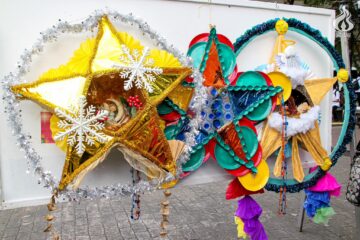By REYANNE LOUISSE AMPONG, AARON THOMAS L. DE GUIA and ALISHA DANIELLE M. GREGORIO

PASSION AND love for literature were again celebrated in the most-awaited Philippine Readers and Writers Festival 2017 held from Aug. 25 to Aug. 27. Book lovers, poets, authors, critics and the like sat and participated in the forums regarding the trends in literature of the vastly progressive world today.
The Flame brings back some of the events that happened during the three-day festivity.
Read and Tell: Writing and Reading LGBT Lit
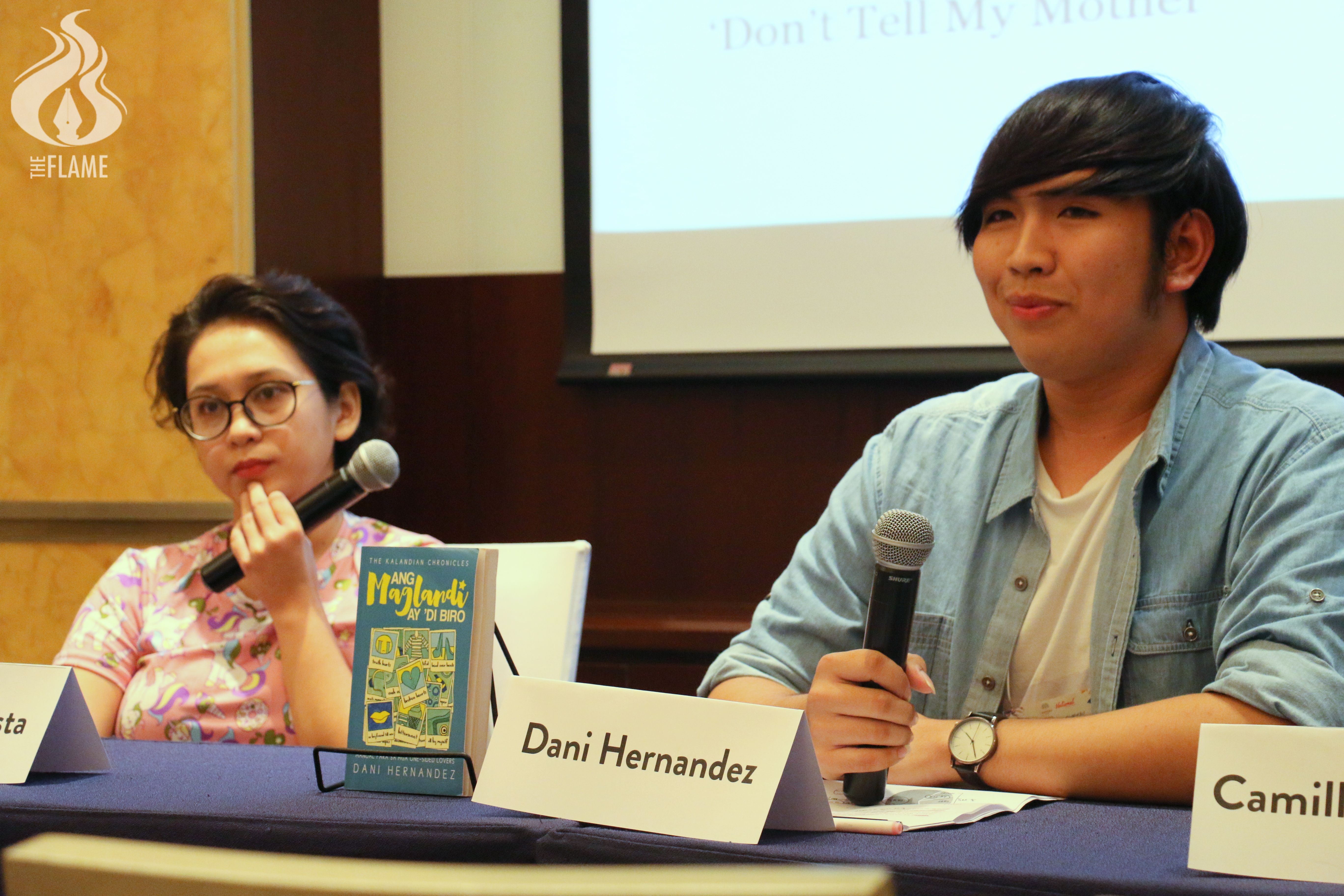
Things took a turn to the creative side in a forum titled “Read and Tell: Writing and Reading LGBT Lit.” It focused on the population of people being able to read, write, and accept Lesbian, Gay, Bisexual, and Transgender (LGBT) literature in a general audience.
Dani Hernandez, a member of the LGBT community and author of “Ang Maglandi ay Di Biro,” shared the challenges in his life and how he overcame them through writing.
To Hernandez, being accepted by the society is a minor thing compared to the love and acceptance one must give to himself. He also believes happiness will eventually be achieved regardless of what other people think.
Another panelist was Brigitte Bautista, also a member of the LGBT community and author of “Don’t Tell My Mother.” She explained that some people are not for reading LGBT literature because it is “out of our natural order.”
Bautista, however, insists that literature has the capacity to influence. “Maybe one day people will learn to accept this kind of literature kahit na they’re not part of the LGBT community.”
Baustista encouraged readers and writers who are still coming out of their comfort zones to stand tall and proud, and to “throw your experience out into the universe” despite criticisms.
Writing for Millenials: Content that Catch Attention

Aspiring writers learned the hacks to producing content that will catch the attention of today’s generation.
“Writing for Millenials: Content that Catch Attention” hosted a panel of talented women who shared their insights and advice on how to achieve success in the writing industry.
Speakers had different strategies and techniques in order to get to where they are now, but they all relayed the same message to everyone present in the forum, especially to the aspiring writers: to follow your passion no matter where it takes you.
The women all write and publish on online platforms such as Wattpad and Facebook. Jamille Fumah, writer of “Babysitting the Billionaire,” has garnered millions of views on Wattpad and has gained the hearts of a lot of millennials of this generation. Also present in the forum is Charmaine Lasar, a successful author who writes on online sites and teaches literature at the Lyceum of the Philippines.
All Killer, No Filler: Effective Writing and Content Creation in the Age of Social Media

Writing on social media nowadays can be a little tricky, especially when one does not completely know its facets. Social media experts discussed what could help online writers and starters to develop engagement to their readers.
Coco Quizon, an online strategist and digital public relations practitioner, shared the importance of creating a context to create more engagement to the readers.
Quizon emphasized the need to establish an identity first, to know who the person is talking to, where is the conversation taking place, and the mutual liking of the writer or the brand to its readers. After gaining the right engagement from the target audience, the creation of content is another task to keep the readers’ attention.
“[O]nce you understand your context, creating your content will come more naturally,” Quizon said.
Martin Yambao, editor of the Philippine STAR Ystyle section, believes that “the perfect caption exists.” He said these captions describe photos, help build context, gain engagements, and add value to the content and images themselves.
Self-Publishing Your Poetry
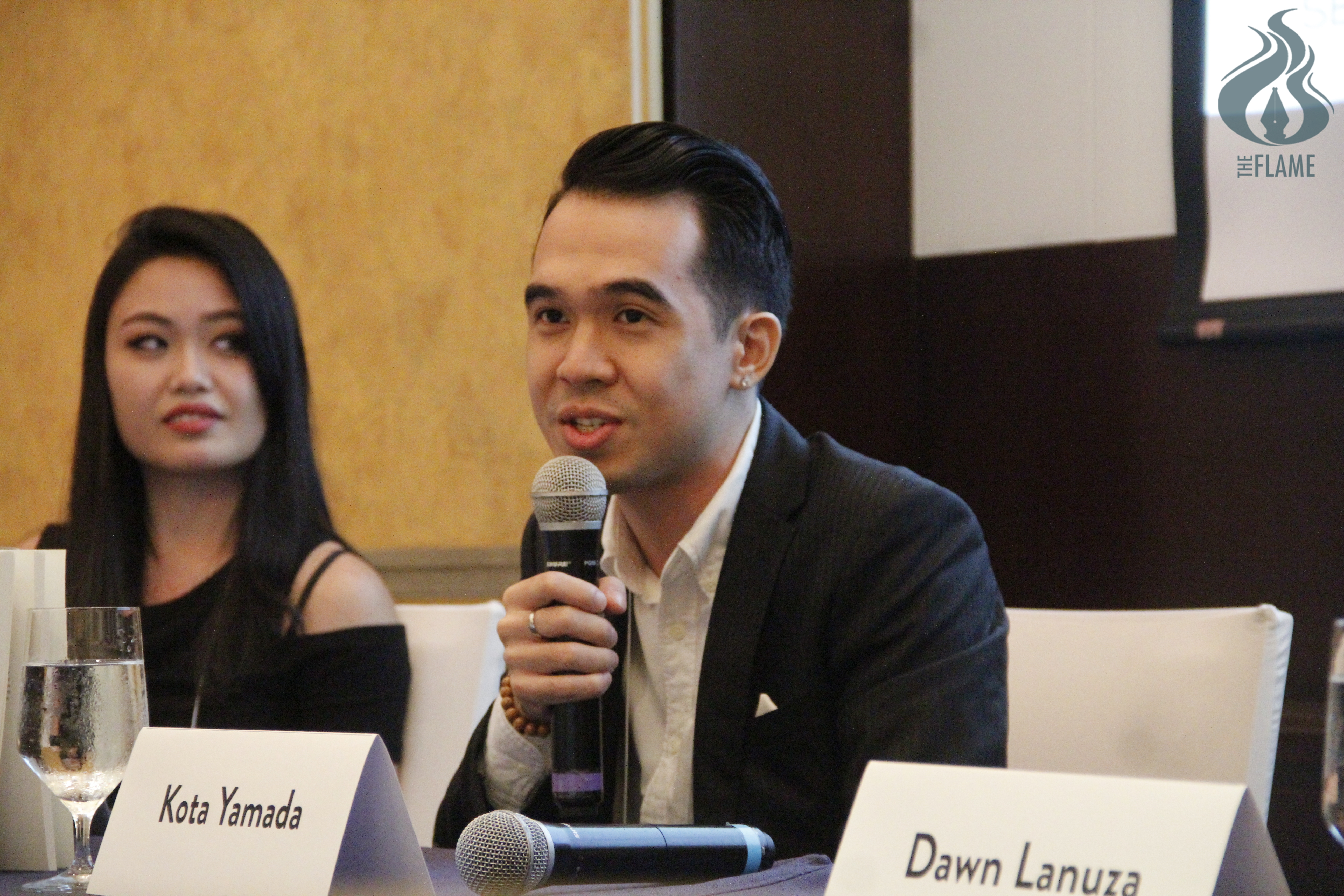
Some contemporary poets managed their way to the best-selling list without needing a publisher. These poets work a little harder to publish their own works by their own means.
Dawn Lanuza, who started as a self-published writer of modern young adult fiction, romance, and poetry with her book “The Boyfrined Backtrack,” discussed the processes of self-publishing a work. She highlighted the need to get a good editor who works in the same genre as the author and the importance of pre-order before printing books to avoid bulk stock.
Kota Yamada, a Cebuano poet and owner of Yamada Publishing, said writing is staying true to what a writer writes and how he feels.
“You don’t get things just because you wanted. You get things because you work hard on it […] You don’t give up,” Yamada told the Flame.
The Path to Possibilities: How Stories Can Reach A Global Audience
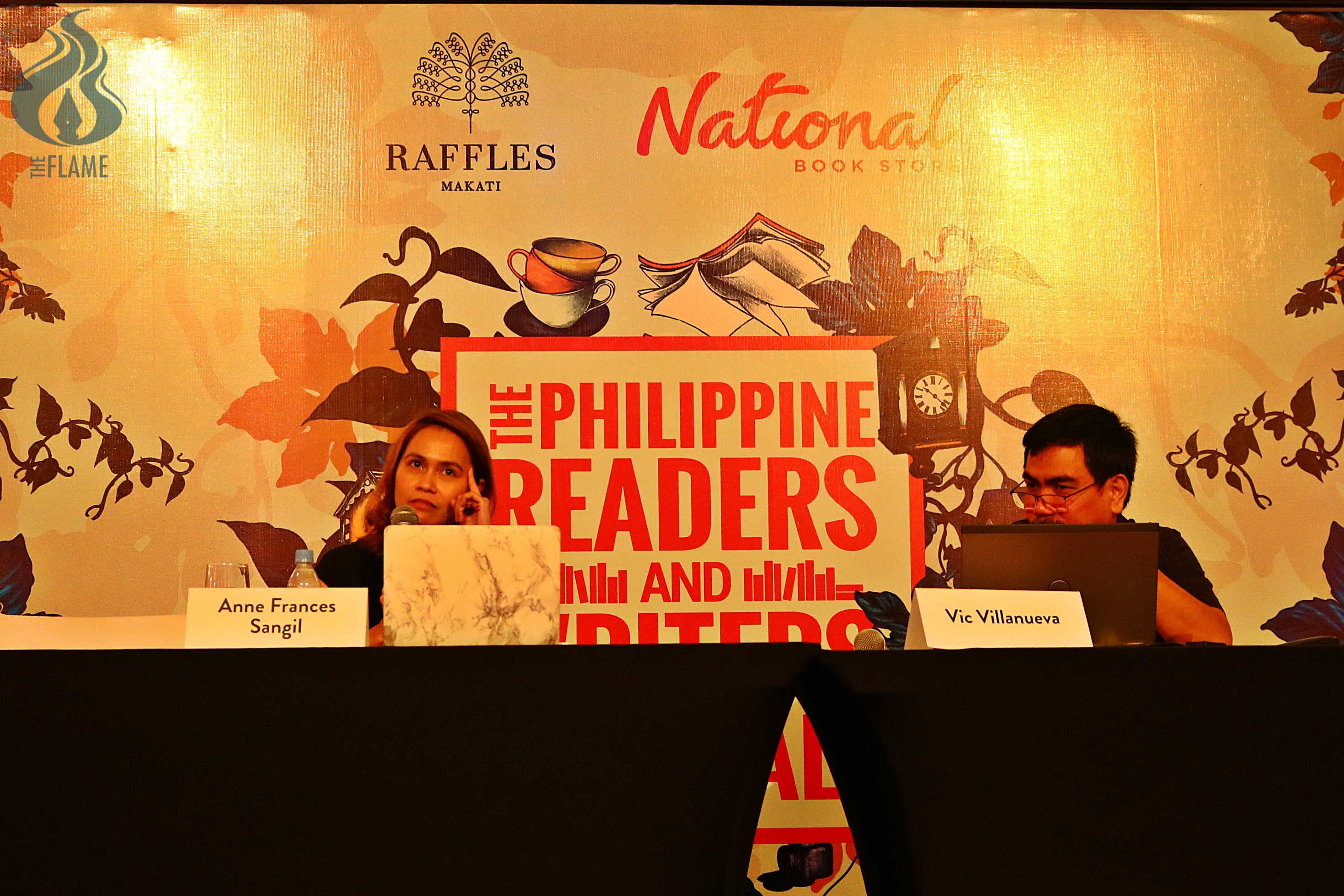
The child in everyone were awakened during the discussion of kids’ stories. People in Hogwarts robes, kids, and kids at heart were present at the ballroom.
“Wild pieces of imagination can lift us beyond where we’re writing from,” said Barry Cunningham, publisher of Chicken House books and the man responsible for the first publication of J.K. Rowling’s “Harry Potter and the Philosopher’s Stone.” Cunningham gave his two important tips when writing stories for children: start with the action right away and carefully define the quality of the villain.
Children’s books, however, are not entirely limited to the young ones. Anne Frances Sangil, an assistant professor at De La Salle University and the Deputy Headmistress of Hogwarts Philippines, used the well-received Harry Potter series as an example. She showed how the series started as a children’s book and how it eventually became a book for all ages.
“A book isn’t called children’s book just because it has young characters,” Sangil said. That’s where you see the magic laced in literature—its relatability to the readers.
Tasting Words: Food Writing Today
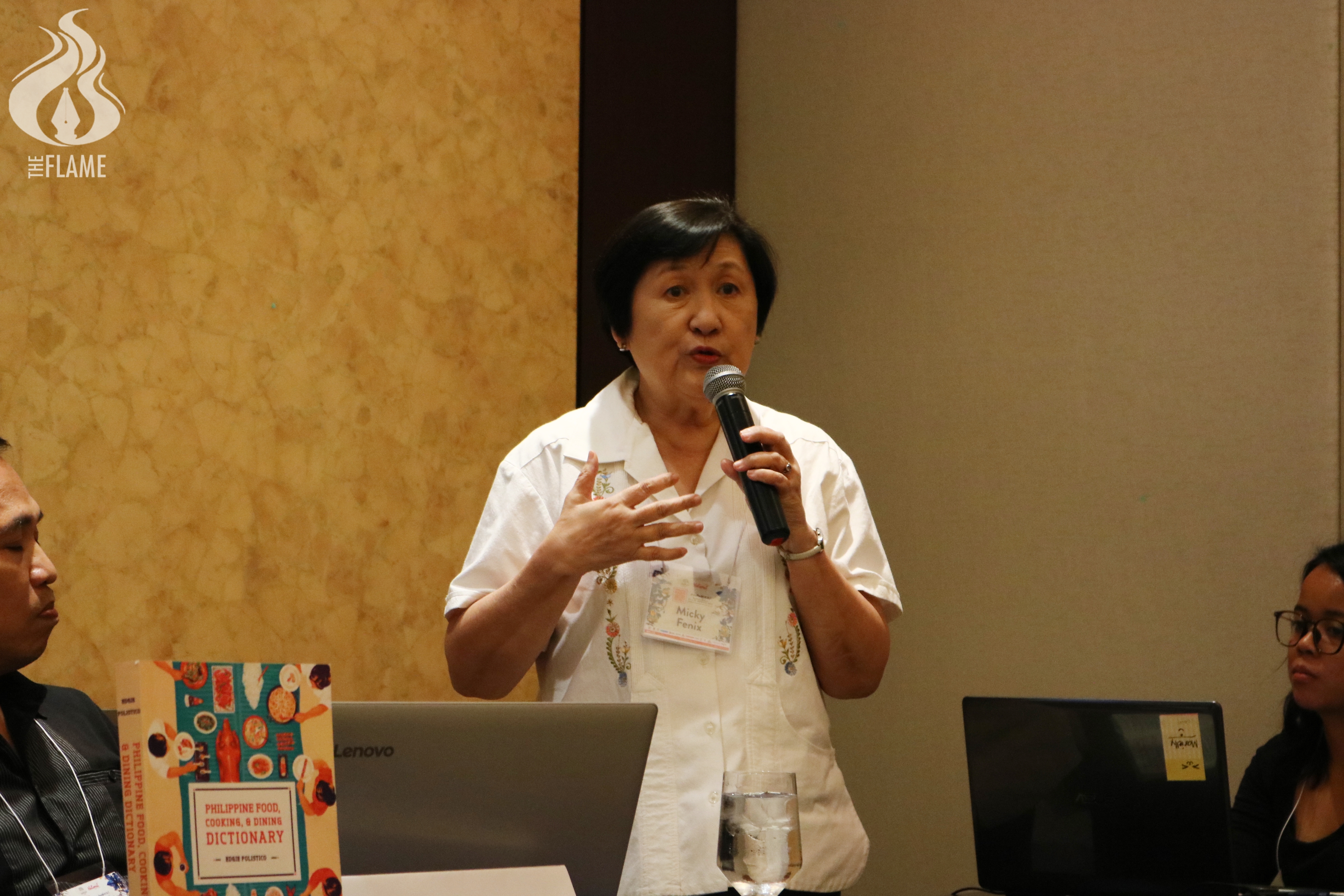
Stomachs of the keen audience may have growled from the topics discussed and photos shown in the forum held on the third day of the festival.
The importance of writing about food, especially in today’s era where everyone can write food and/or restaurant reviews through blogs or social media, was highlighted in the forum.
The four panelists all had a common message: it is not just about writing critiques or appreciation of the food itself, but it’s also researching about food and how it relates to humans and the daily life.
Knowing the culture of a certain place may be achieved by trying local food. Micky Fenix, an acclaimed food writer and author of “Kulinarya: A Guide to Philippine Cuisine,” reminded that food and culture go together, as well. She also expressed disappointment on other people’s views that culture is only comprised of music, dance, and visual arts.
Amy Uy, co-author of “Panaderia: Philippine Bread, Biscuit, and Bakery Traditions” together with Jenny Orillos, said food and history are also related.
Uy painted pictures of how a lowly piece of bread such as pandesal reveals Filipinos’ values and beliefs, demonstrates Filipino customs and traditions, and defines social differences.
The two hours for the forum may not be enough to cover more topics, but it definitely allowed food writers and aspiring ones to look at the bigger picture. That is, valuing food by writing and giving more depth to it. F


